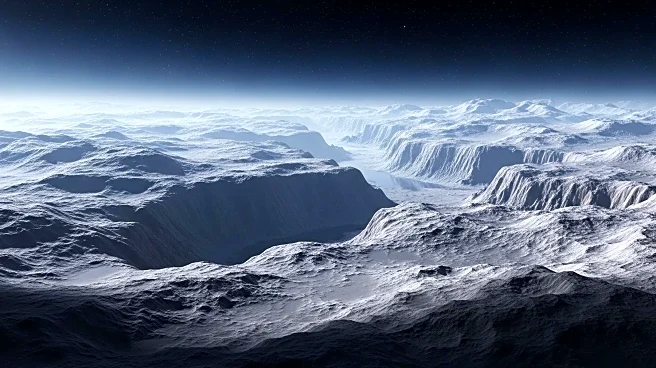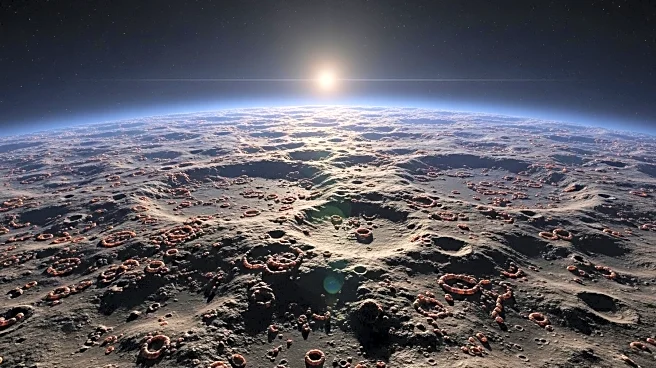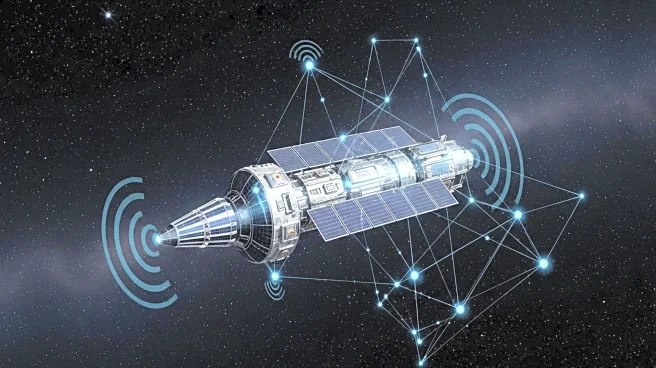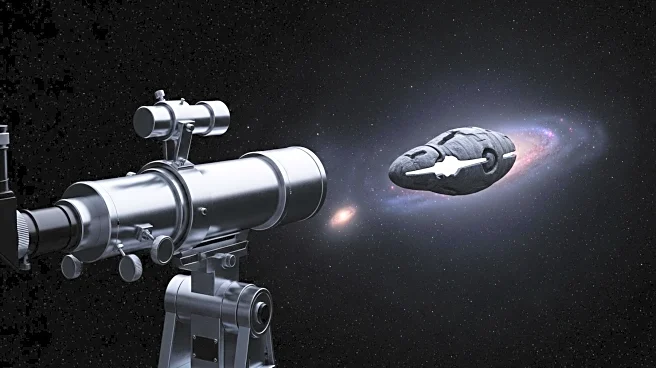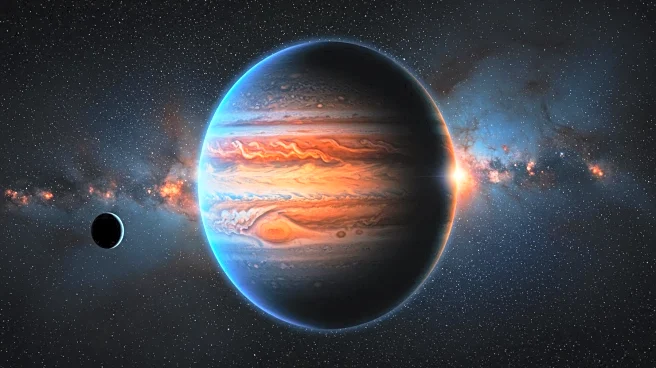What is the story about?
What's Happening?
Scientists from Nagoya University and the Italian National Institute for Astrophysics have successfully pinpointed the birth of Jupiter using chondrules found in meteorites. These small spheres, formed from molten rock droplets, provide crucial insights into the early solar system. The study, published in Scientific Reports, reveals that chondrule formation coincided with Jupiter's rapid growth and accumulation of nebular gas. By analyzing the characteristics and abundance of chondrules, researchers determined that Jupiter's formation occurred 1.8 million years after the solar system began. This discovery offers a new method for dating the formation of planets and understanding the development of our solar system.
Why It's Important?
The ability to accurately date Jupiter's formation using chondrules marks a significant advancement in planetary science. It provides a clearer picture of how our solar system developed and offers insights into the processes that govern planet formation. Understanding Jupiter's birth is crucial, as its massive size and gravitational influence have shaped the orbits and characteristics of other celestial bodies. This research also suggests that similar processes may occur around other stars, offering a window into the formation of planetary systems beyond our own. The findings could inform future studies on the origins of planets and the conditions necessary for their development.
What's Next?
The study opens new avenues for research into the formation of other planets, both within our solar system and in distant star systems. Scientists may use chondrules to trace the birth order of planets and explore the dynamics of early solar system development. Further research could focus on understanding the role of other giant planets, like Saturn, in triggering chondrule formation. This ongoing exploration may lead to new discoveries about the processes that govern planet formation and the potential for life in other planetary systems.
Beyond the Headlines
The discovery of Jupiter's birth using chondrules highlights the interconnectedness of planetary science and astrobiology. It challenges us to consider the broader implications of planet formation and the potential for life in other star systems. This research underscores the importance of understanding the origins of our solar system, as it may provide clues about the conditions necessary for life to thrive.
AI Generated Content
Do you find this article useful?



